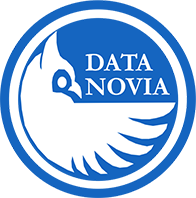Introduction
Welcome to this comprehensive, hands-on interactive Python course! In this course, you’ll progress from foundational concepts to more advanced topics, while practicing in real time using Quarto Live and Pyodide. Each lesson builds on the previous one and includes practical examples, exercises, and challenges to solidify your learning.
Lesson 1: Variables, Data Types, and Printing
Overview:
Learn how to assign variables, understand basic data types (int, float, str, bool), and use the print() function to display output.
Example Code
Modify the values or add new variables to see the effect.
Further Reading
Lesson 2: Control Flow and Loops
Overview:
Explore conditional statements (if, elif, else) and loops (for and while) to control the flow of your programs.
Example Code
Change the condition or list to see dynamic output.
Further Reading
Lesson 3: Functions
Overview:
Learn how to define and use functions to encapsulate reusable blocks of code. Understand parameters and return values.
Example Code
Modify the function to compute a cube or add more parameters.
Further Reading
Lesson 4: Basic Data Structures
Overview:
Understand lists, dictionaries, tuples, and sets to store and manage data collections.
Example Code
Experiment with creating and modifying different data structures.
Further Reading
Lesson 5: Putting It All Together
Overview:
Combine variables, control flow, functions, and data structures into a cohesive program. Solve a challenge by filtering even numbers and doubling them.
Example Code
Modify the function to filter odd numbers or include additional logic.
Further Reading
Lesson 6: Error Handling and Debugging
Overview:
Learn how to write robust code using try and except to handle errors, and get tips on debugging.
Example Code
Extend the function to handle other errors, such as type mismatches.
Further Reading
Lesson 7: Advanced Data Structures and Object-Oriented Programming
Overview:
Expand your Python skills by exploring advanced data structures (like tuples and sets) and learn the basics of object-oriented programming (OOP).
Example Code (Advanced Data Structures)
Example Code (OOP Basics)
Create your own class with additional attributes and methods.
Further Reading
Lesson 8: Real-World Project: Interactive To-Do List
Overview:
Apply what you’ve learned by building a mini project—a simple interactive to-do list application that lets users add tasks.
Example Code
Extend the project to include task removal or marking tasks as complete.
Further Reading
Interactive Exercise: Tip Calculator
Overview:
In this exercise, you’ll create a function to calculate the total amount to be paid on a bill by adding a tip. The function should convert the tip percentage into a decimal and add it to the original bill. Your task is to fill in the blank with the correct value. After running your code, an automatic grading block will provide immediate feedback on your answer.
To convert a percentage into a decimal, divide by 100. Replace the blank with 100.
def calculate_tip(bill, tip_percentage):
tip = bill * tip_percentage / 100
return bill + tip
result = calculate_tip(100, 15)
print("The total amount for a $100 bill with a 15% tip is", result)Further Reading
Further Reading (Course Level)
For additional insights and resources on Python programming, explore these dedicated tutorials:
- Interactive Code Blocks Explained
Learn how Quarto Live sets up interactive code blocks. - Loading and Using Packages
Discover techniques for installing and loading Python packages. - Managing Execution Environments
Understand how to control variable sharing and isolate interactive sessions. - Cell Options Reference
Explore advanced configuration options for interactive code blocks.
Conclusion
Through these step-by-step lessons, you’ve built a solid foundation in Python—from the basics of variables and control flow to more advanced topics like error handling, OOP, and real-world projects. Practice the examples, complete the exercises, and explore the further reading resources to deepen your knowledge and build more sophisticated interactive Python applications.
Explore More Articles
Here are more articles from the same category to help you dive deeper into the topic.
Reuse
Citation
@online{kassambara2025,
author = {Kassambara, Alboukadel},
title = {Interactive {Python} {Course:} {Step-by-Step} {Lessons}},
date = {2025-03-19},
url = {https://www.datanovia.com/learn/interactive/python/interactive-course.html},
langid = {en}
}
